This post is part of a series on my visit to Changdeokgung palace on the last day of my holiday in Korea during October 2009. If you haven't read the first part, that's here: Korea day 7 part 1 - Walk up Donhwamun-ro.
Looking through Injeongmun gate, you can see Injeongjeon, the throne hall of Changdeokgung.
Although it was a self guided tour day, there were still some tour groups looking round the palace. You can see a group here silhouetted in the shadow of Injeongmun.
Although Injeongjeon (Hangeul: 인정전 Hanja: 仁政殿) appears to be a two storied building from outside, it is actually a single storey building with a high roof. It would be used mainly for official ceremonies such as coronations and receiving foreign ambassadors.
On the roof ridge of Injeongjeon are some copper plum motifs, which were apparently placed there by the Japanese during the occupation of Korea. According to the Changdeokgung guide book:
The Japanese devised cunning strategies to snub the Joseon Dynasty and blunt Korean pride. An example is this plum motif, which can be found on the roofs of Injeongjeon and Injeongmun Gate. The Chinese characters for 'plum' are 李花. The surname of the founder of the Joseon Dynasty is 李, pronounced Yi, same as the first syllable of plum in Chinese. The Japanese sought to downgrade the Joseon Synasty to a clan society of the Yi family under the Japanese Emperor. That is why the Japanese referred to Korea as the Yi Dynasty, not Joseon.
Inside Injeongjeon you can see the traditional throne and painted woodwork. However, it also has less traditional elements, such as a wooden floor, glass windows, and large chandeliers. It was modified in 1908 to this more 'modern' western style, and at that time the traditional throne was not used either. You can see a photo of how it looked around that time on this website (about half way down the page): http://ujuhim.co.kr/main100-09.htm
On the raised stone platform that Injeongjeon is built on, there are large bowls on either side. These are called Deumeu (Hangeul: 드므) and were used for fire prevention. However, they weren't really large enough to pull much water from if there was a fire, rather they were meant to scare away fire demons. The idea was that the fire demon (they seem to be referred to as Bulgwisin (Hangeul: 불귀신; Hanja: 火歸神) and Hwama (Hangeul: 화마; Hanja: 火魔)) would look into the water and then be frightened off by its own reflection.
Looking up at the roof of Injeongjeon from below you can appreciate the brightly painted woodwork of the eaves. The current building dates from 1804, after it was burned down in 1803.
Next we went through a gate to the east, towards Seonjeongjeon and Huijeongdang.

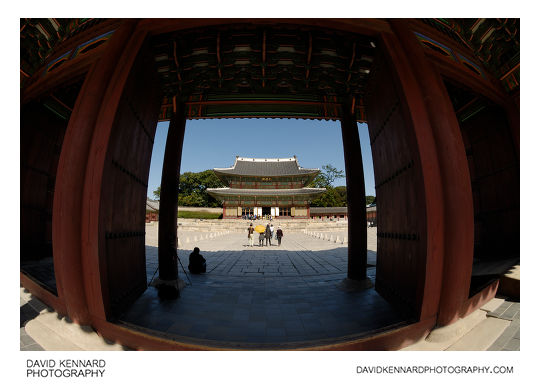
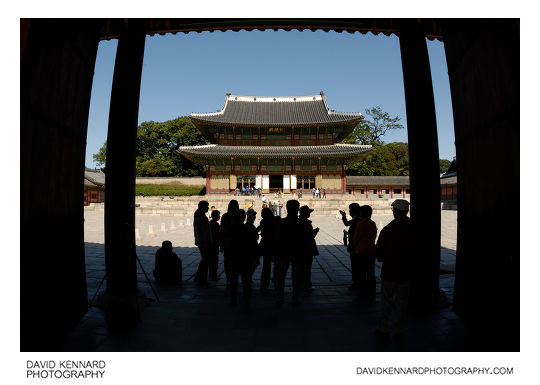
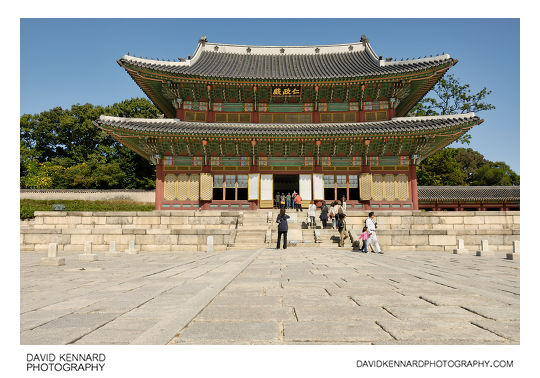
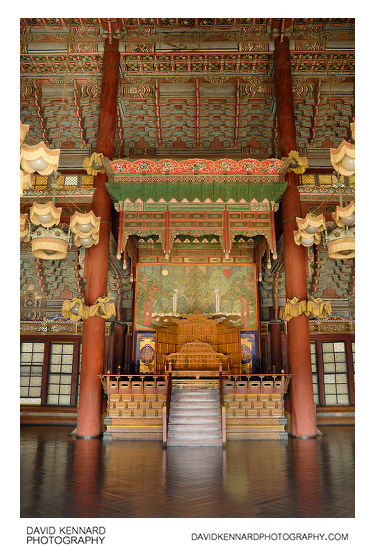
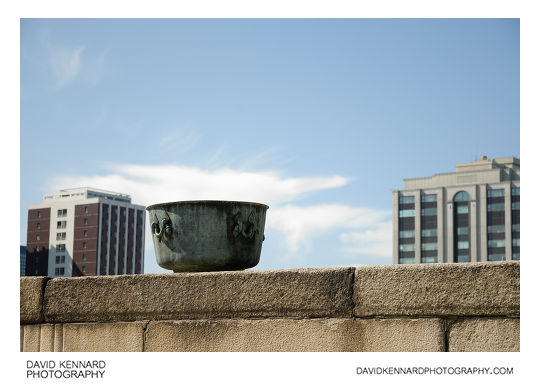
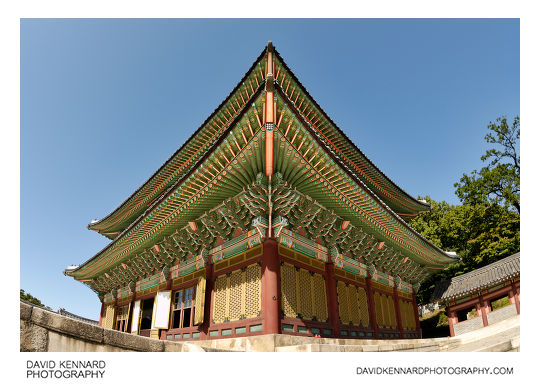
Leave a Reply